Events and excursions, Spring 2013
Spring Meeting and AGM, 2013
The AGM and lecture were held in Ravenshead Village Hall.
The Reports
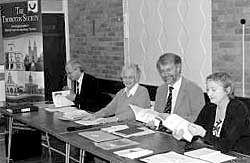
Last year we had the wettest April for a hundred years but a dry day for the Spring Meeting: this year it was probably one of the driest Aprils, and then there were rain showers on 27th April as our President, Dr Rosalys Coope, reminded us in her welcome. However, the weather didn’t spoil a most interesting day. Again good numbers attended and we were well accommodated in Ravenshead Village Hall.
After the welcome by Rosalys, the AGM continued chaired by Professor John Beckett.
In his Chair’s Remarks, Prof. Beckett thanked his colleagues on the Society’s Council for all their support over the year. He also thanked Dorothy Johnston who was standing down from Council this year as she prepares to move to Oxford. Dorothy has been of great assistance to many members undertaking research in her role as the Keeper of Manuscripts and Special Collections at the University of Nottingham.
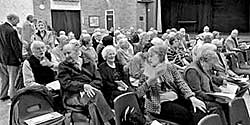
John also paid tribute to those members who had died during the year – these included Eric Coddington who had been so supportive of the forthcoming Welbeck Map Volume, long-standing and loyal members Alf Bowley and Freda Oldfield, and our Treasurer’s wife, Anne Wilson.
We were very pleased to elect a new Vice-Chairman, the eminent historian and polymath, and local boy, Sir Neil Cossons. Trevor Foulds, David Crook and Philip Jones were re-elected to serve on the Council.
John commended the latest volume of Transactions, edited by Martyn Bennett and Keith Challis. Those attending were able to take their copies home with them – and many took friends’ and neighbours’ copies too which greatly helps the Society with the escalating postage costs. Also he thanked Howard Fisher for the latest Record Series volume, edited from Archbishop Drummond’s parish visitation returns of 1764. Further volumes were in varying stages of completion and we look forward to those. Also in the final stages of preparation by Andy Nicholson is an online bibliography, building on Michael Brook’s printed volume.
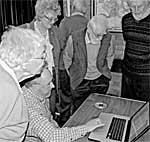
Steph Mastoris demonstrating his progress on the map project which is going well and, with the help of Andy Nicholson, will provide an excellent search facility. It is hoped to publish a DVD in the Record Series in the relatively near future.
Again the informative and attractive newsletter, edited by Howard Fisher, was praised. This year, another Society addition, two most attractive banners which will be used to publicise the Society at events such as the Great Nottinghamshire History Fair. Thanks to David Hoskins for overseeing their design and production.
We had the usual efficient report from John Wilson, the Hon Treasurer, who assured us of the Society’s financial health - it was agreed that members’ subscriptions should not be increased this year. There were also progress reports on the Research Group from John Wilson and on the Victoria County History for Nottinghamshire from Graham Crisp. Both of these groups were formally established at the last AGM.
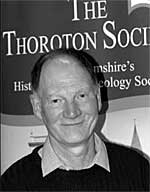
Philip Jones
Following the business of the AGM, Philip Jones, resident of Ravenshead, gave a most interesting illustrated talk on the parish’s history and development from small and isolated parts of Blidworth Parish into the substantial settlement Ravenshead is today.
We then we had a super tea provided by Abbey Gates WI and members had a chance to chat and to admire the wonderful maps of William Senior which Steph Mastoris was showing – the result of impressive manipulation of the (virtual) originals by Andy Nicholson.
After this, Philip led members to the church where the local incumbent explained its history. Following this many of the members went for a walk around the village, led by Philip.
It was an interesting and enjoyable day – where will it be held next year?
Barbara Cast
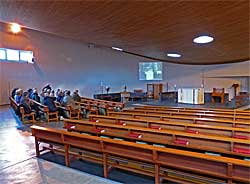
Interior of Ravenshead Church
Following a short walk the surprise was in arriving at a largely circular church with a parabolic parabaloid roof structure. The circular structure reminded me of churches I have visited in Scotland which were allegedly built in this way so that there was no hiding-place for the devil, and I was also reminded of the Church of Jeanne d’Arc in Rouen. There are, of course, several round churches of modern build but very few older such churches remain. However, the roof style of St. Peter’s is probably unique in modern church building. A secular example is the listed such roof at Markham Moor where the building was originally a filling station and then in 1989 converted to a Little Chef and the last time I passed was not in use.
The original design for the new church was not radical enough for the then Vicar who wanted a much more modern design. After taking our places in the pews we were introduced to the Vicar, Reverend Chris Rattenberry who explained in a pleasing and often witty style the origins of the Anglican Church in Ravenshead and the erection of the present building. The Anglican community first met in a private house and then in the late 1940’s an ex-military hut was bought and used before the eventual erection of the present The Vicar used a digital slide show to illustrate his talk and ended with a film of the construction from a small wood of silver birch trees to a religious site.
An entertaining and instructive talk.
Howard Fisher
Following the visit to the church many members went for a walk around part of the village, led by Philip. Buildings seen on the walk included the Grade II East Lodge at the entrance to Newstead Abbey - a Gothic-style stone lodge designed by Charles Alban Buckler and dated 1862; the Hutt pub/restaurant, mainly Victorian in date with 20th century additions, but originally dating back to at least 1739; Hutt Farm Court, now a block of modern flats created out of the original 19th century farmhouse; and Vernon House, one of a number of houses built by William Dovey in the mid-1930s.
Philip Jones
Recent Lectures
9 FEBRUARY 2013 – THE MYLES THOROTON HILDYARD LECTURE
LOST CHURCHES AND CHAPELS OF NOTTINGHAMSHIRE JOHN BECKETT AND HOWARD FISHER.
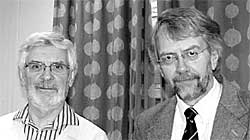
Howard Fisher and John Beckett
This lecture was given jointly by two speakers well known to members of the Thoroton Society, John Beckett, our Chairman, and Howard Fisher, the editor of the newsletter. The lecturers are both interested in the spread of churches and chapels throughout the County and with the history and position of those which have been lost over time. Some of them because of the loss of their parishes and some through demolition and/or conversion into industrial premises, barns, garages or even homes.
John Beckett spoke first and showed several slides of the sites of churches long since demolished, whose original position is unknown to the casual observer. Some of these existing in parks and public gardens with the walls almost entirely lost. As an example, St. Philip’s Church, Pennyfoot Lane, was built in 1879, its parish was created out of the existing neighbourhood parish of St. Luke’s and catered for a large area of very poor housing. The housing was cleared in the late 1950s and the Church which now had no parish was demolished in 1965. The site now houses the Bio-City research complex.
Howard Fisher concentrated on the lost chapels of the County, particularly those in the Keyworth area. Some of these had been in existence for a very few years and had been converted into houses and adjuncts to houses in the form of private garages. One had spent a number of years as a framework knitter’s shop. Howard showed several slides of these buildings in their various existences. Several members had known the buildings as chapels, some had ancestors who had been involved in their services in the heyday of their time as chapels.
Members of the audience were inspired to ask lots of questions showing a considerable personal interest in what was for many members an unusual subject. The lecture was stimulating and well presented and we look forward to the Record Series’ forthcoming production on this fascinating subject which will surely inspire more members to look carefully at buildings in the future.
Penelope Messenger.
9 MARCH 2013 - THE MAURICE BARLEY LECTURE
PEVSNER IN NOTTINGHAMSHIRE: A BUILDINGS OF ENGLAND EXPERIMENT ELIZABETH WILLIAMSON
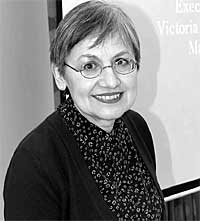
This year’s Maurice Barley lecture was given by Elizabeth Williamson, Executive Editor of the Victoria County History. Between 1976 and 1997 Elizabeth worked for the Buildings of England series, better known to Thorotonians simple as ‘Pevsner’, and in that time she was responsible for updating the first editions (which had been written by Sir Nikolaus himself) for the East Midlands counties of Derbyshire, Nottinghamshire, Leicestershire and Rutland.
In the first edition of Nottinghamshire, published in 1951 (and selected with Middlesex and Cornwall as the starting volumes to the new series) Pevsner specifically thanked Maurice Barley, Keith Train, Norman Summers and, more generally, the Thoroton Society for their input. Elizabeth called upon Barley, Train and Summers again when she came to revise the first edition, and consulted many other Thoroton members, among them our President, Rosalys Coope (who, sadly, was unwell and unable to attend Elizabeth’s lecture).
We heard about Pevsner’s interest in Southwell, his methods of working, the origins of the Buildings of England series, the development of interest in vernacular architecture, the challenges faced by a Pevsner ‘reviser’ (including Elizabeth’s exploits by bicycle), and much else besides.
Elizabeth finished with reference to Elaine Harwood’s recent work, some reflections on modern architecture (including the University of Nottingham’s Jubilee campus), and the hope that it will not be too long before there is a third edition of Nottinghamshire. 120 people packed the Nottingham Mechanics’ hall, a measure of the interest that there is in the buildings of Nottinghamshire.
John Beckett.
Stanford House, the Owners
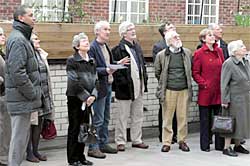
Pete Smith explaining features of Stanford House.
In the evening of Wednesday, 10 April 2013 a group of twenty members assembled at Stanford House, 19 Castle Gate, Nottingham for a tour of the property by very kind permission of the property owner, David Adjose of Exeid Locations. The property has been renovated and converted to very high quality serviced offices. Our guide to the house was Pete Smith and David Adjose accompanied us and offered appropriate comments from time to time.
As an introduction to the tour of the property ELIZABETH ROBINSON gave us an insight into the story of the house and its various owners. This was an instructive and interesting talk which is reproduced in amended form with Elizabeth’s permission here.